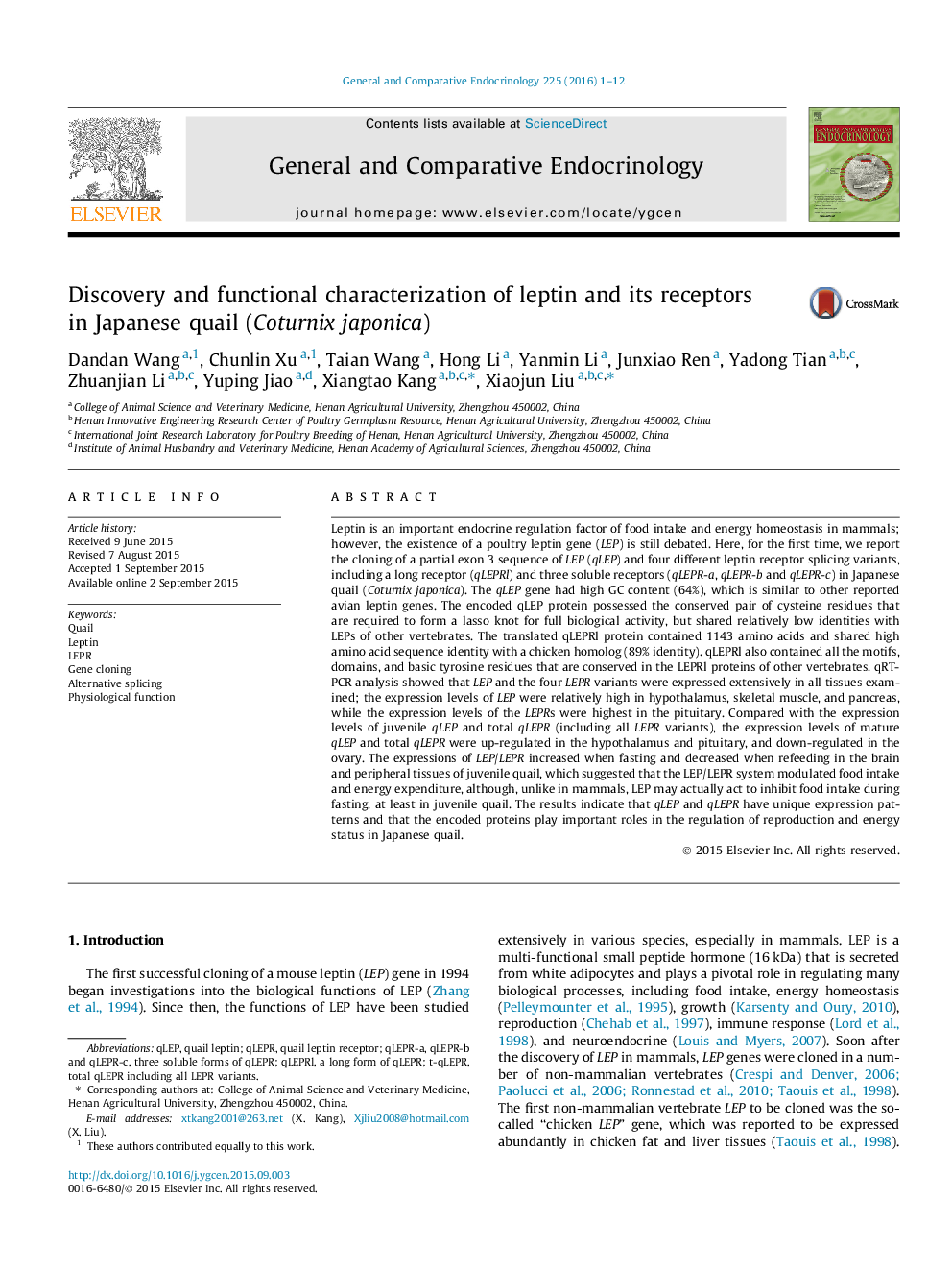| کد مقاله | کد نشریه | سال انتشار | مقاله انگلیسی | نسخه تمام متن |
|---|---|---|---|---|
| 2799872 | 1568881 | 2016 | 12 صفحه PDF | دانلود رایگان |

• LEP and four leptin receptor isoforms were obtained firstly in Japanese quail.
• qLEP and the four qLEPR isoforms were expressed extensively in all tissues examined.
• Fasting increases and refeeding decreases LEP and LEPR expressions of juvenile quail.
• LEP may actually act to inhibit food intake during fasting, at least in juvenile quail.
• qLEP and qLEPR may play important roles in regulating reproduction and energy status.
Leptin is an important endocrine regulation factor of food intake and energy homeostasis in mammals; however, the existence of a poultry leptin gene (LEP) is still debated. Here, for the first time, we report the cloning of a partial exon 3 sequence of LEP (qLEP) and four different leptin receptor splicing variants, including a long receptor (qLEPRl) and three soluble receptors (qLEPR-a, qLEPR-b and qLEPR-c) in Japanese quail (Coturnix japonica). The qLEP gene had high GC content (64%), which is similar to other reported avian leptin genes. The encoded qLEP protein possessed the conserved pair of cysteine residues that are required to form a lasso knot for full biological activity, but shared relatively low identities with LEPs of other vertebrates. The translated qLEPRl protein contained 1143 amino acids and shared high amino acid sequence identity with a chicken homolog (89% identity). qLEPRl also contained all the motifs, domains, and basic tyrosine residues that are conserved in the LEPRl proteins of other vertebrates. qRT-PCR analysis showed that LEP and the four LEPR variants were expressed extensively in all tissues examined; the expression levels of LEP were relatively high in hypothalamus, skeletal muscle, and pancreas, while the expression levels of the LEPRs were highest in the pituitary. Compared with the expression levels of juvenile qLEP and total qLEPR (including all LEPR variants), the expression levels of mature qLEP and total qLEPR were up-regulated in the hypothalamus and pituitary, and down-regulated in the ovary. The expressions of LEP/LEPR increased when fasting and decreased when refeeding in the brain and peripheral tissues of juvenile quail, which suggested that the LEP/LEPR system modulated food intake and energy expenditure, although, unlike in mammals, LEP may actually act to inhibit food intake during fasting, at least in juvenile quail. The results indicate that qLEP and qLEPR have unique expression patterns and that the encoded proteins play important roles in the regulation of reproduction and energy status in Japanese quail.
Journal: General and Comparative Endocrinology - Volume 225, 1 January 2016, Pages 1–12